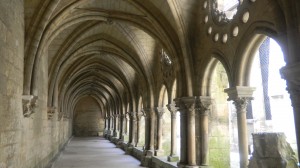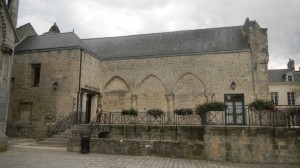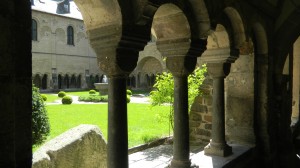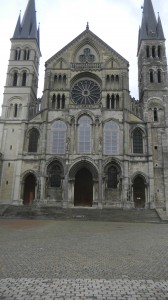I promised you trouble in my last post on Gothic cathedrals. Now it’s time to give it to you.
 It looks innocent–what could be more peaceful than a cathedral’s cloister? But storms were brewing in places like this in the 12th century that shook Europe.
It looks innocent–what could be more peaceful than a cathedral’s cloister? But storms were brewing in places like this in the 12th century that shook Europe.
A brilliant and hot-headed young man happily plunged into the turbulence when he arrived in Paris. Peter Abelard was born into a minor noble family in Brittany. His father saw the growing importance of literacy in the growing medieval towns–and he couldn’t help noticing that his son was as quick as a fox. Peter entered Notre Dame’s cloister school, and publicly disagreed with his teacher, William of Champeaux–the most renowned theologian in Europe. Ableard won and left to start his own school, and many of his classmates went with him. Silicon Valley start-up culture emerged on the medieval Seine.
Ableard was armed with Aristotle’s logic. Aristotle’s works were being translated into Latin in Spain in the 12th century, and people in Europe were discovering the power of analyzing their knowledge. Aristotle taught techniques for thinking about how folks categorize things, relationships between words and reality, and how to identify faulty arguments.
Ableard wrote a book called Sic et Non (Yes and No) by compiling contradictory statements by founders of the Church about 158 different issues. Medieval Europe’s newly urban and literate people were pioneering ways to see things from multiple angles, and to question ideas that reality is all top-down (which Romanesque cathedrals expressed). Many young men were eating these new ideas up like figs dripped in honey.
Europe’s first universities were emerging. Scholars were congregating in cathedral cloisters and town squares. As the gatherings became regular, universities in Paris, Bologna, Padua, Salerno and Oxford were established, and they awarded degrees.
Young men flocked to them. They lived in special residences, struggled on low budgets, got drunk whenever they could, and were known for rowdiness–the college experience was established.
Saint Bernard was not amused. Those lusty young men were applying their new intellectual tricks to the deepest spiritual mysteries, like the Trinity–a subject that one can only approach after decades of devotion and study. Bernard claimed that faith does not dispute–it believes.
Always cocky, Abelard challenged the old buzz-kill to a public debate in Sens (in northern France). But Bernard arrived first and used his political clout to rig the debate into a form that accused Abelard of misconduct. Still a fox, Abelard quickly realized he couldn’t win, and walked out.
But students in all universities were excited by the power of their new reasoning skills, and they tussled with the Church over freedom of thought for the rest of the Middle Ages. When Islamic orthodoxy was being established at al-Azhar University, Europeans were developing techniques for questioning authority.
Ironically, Arabs had preserved Aristotle’s writings for more than 500 years after the West forgot them, and people in Spain were translating them into Latin from Arabic. But European universities often had more freedom to apply new reasoning skills. They created foundations of the modern West’s love of critical inquiry.
But there were other reasons why the Islamic world wasn’t as centered on logic–Islamic thought has had its own structures, which are also very rich.




Comments on this entry are closed.